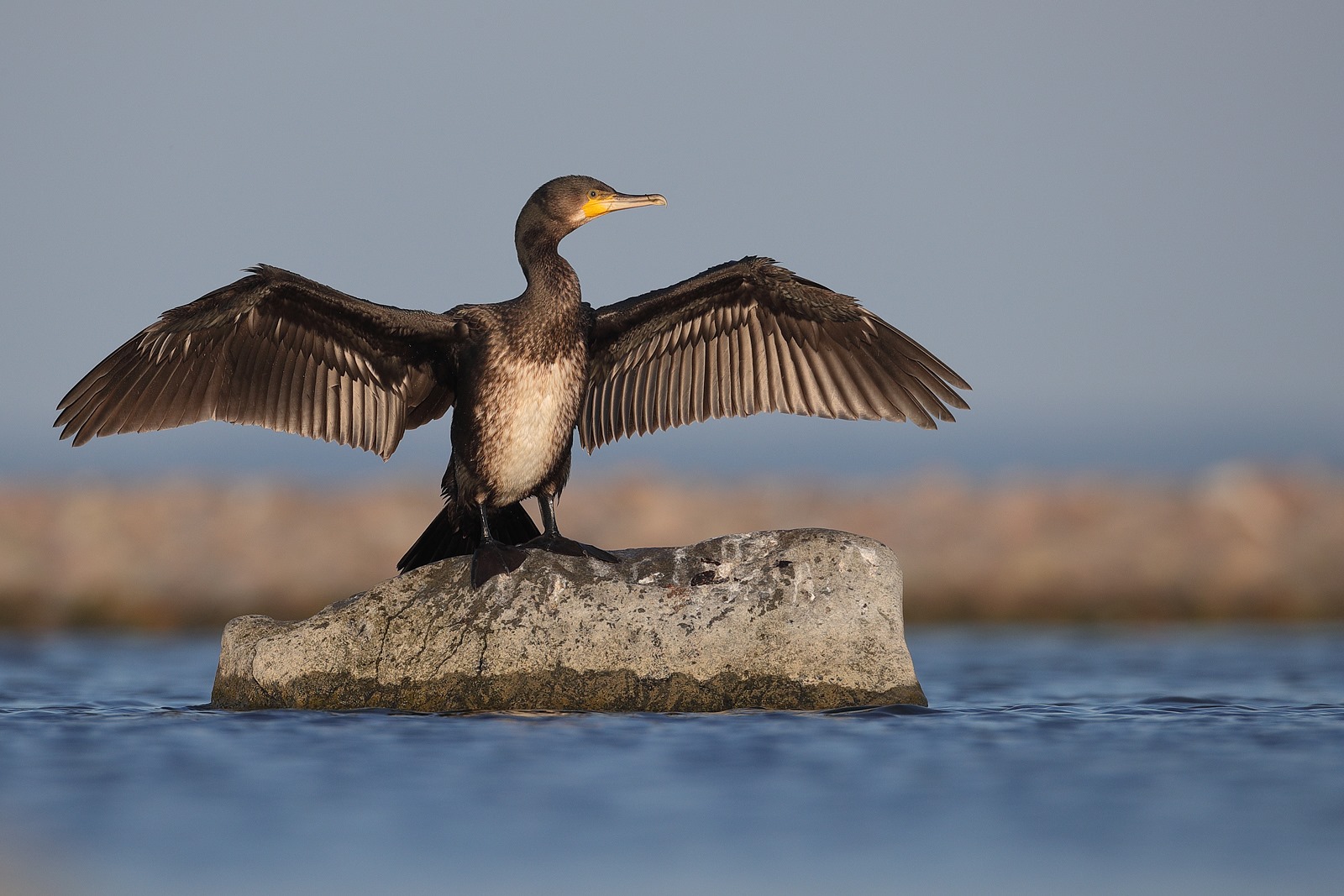Great cormorant
- Great cormorant, Tondirahu
- https://linnuriik.ee/wp-content/uploads/2021/09/kormoran-1024x683.jpg
- Keemu linnud
- https://linnuriik.ee/wp-content/uploads/2021/09/09_Kormoran_090608aa201222_Tondirahu.mp3
Great cormorant. Photo: Kilvar Kessler
Tutvustus
Latin Phalacrocorax carbo (L.)
Estonian Kormoran
Also known as: black shag, kawau, the great black cormorant, the black cormorant, the large cormorant
Status in Estonia
Breeding, migratory and wintering bird.
Description
The great cormorant is a big bird with a long, thick neck and curved beak. From a side view, the head is quite angular, with a powerful beak. Plumage is black with a blue-green metallic sheen and the wings are bronze with a black pattern. The bare skin at the base of the lower beak is predominantly yellow, with a white patch behind it. The white thigh patch is only present during the breeding season. There are varying amounts of white feathers on the beak and nape, with the majority falling out over the summer. The top half of the young bird is dark brown, while the lower part has some white, typically in the middle of the throat, breast and stomach.
Size
Body length 77–94 cm, wingspan 121–149 cm, body mass 2.2–3.6 kg.
Similar species
There are no similar species in Estonia.
Distribution
It is widespread on all continents except South America and Antarctica. It is widespread in Estonia according to the presence of suitable biotope.
Population
Estonia has 15,000–25,000 breeding pairs.
Occurrence in Estonia
It is mostly a migratory bird but is also seen (300–1000) in winter. It arrives in spring from mid-March to mid-April. The autumn migration happens primarily from the end of July until the middle of September.
Diet
It mainly feeds on fish (common roaches, gobies, etc.); other sources of food are probably incidental (molluscs, insects, crustaceans, plants). It eats an average of 750 g of fish every day.
Habitat
It breeds in Estonia in colonies along the coastlines and islands of both coastal seas and inland lakes as well as in close proximity to the lake shore.
Nesting
Nests are built on the ground or in bushes or trees. A few dozen to slightly more than a few thousand nests have been found in Estonian colonies. From April to June, the female and male bird build a massive, up to one-metre-high nest pile out of algae, branches and other available materials. The female bird then lays 3–5 eggs, one every 2–3 days. The eggs are brownish-green and frequently covered with a thick layer of droppings by the parents. Both adult birds incubate the eggs for 28–31 days. During incubation, the eggs sit on the legs. The chicks are helpless after hatching; they are fed by both parents, initially with food digested by the parents and then with solid food. Chicks can fly 50 days after hatching and are no longer dependent on their parents after 70 days.
Conservation status and protection
Not under protection.
Distribution and population in Lääne County
The great cormorant is a common migratory and breeding bird with a local distribution in Lääne County. In the spring and autumn, great cormorants can be seen in big flocks in Haapsalu and Matsalu bays. In Matsalu, it is best to watch them from Keemu observation tower or Cape Puise. The great cormorants are also abundant along the Kasari River during the spring fish spawning season.
While there were hundreds of pairs of great cormorants nesting on the coasts of Matsalu National Park around the turn of the century, their numbers have since declined. One reason is the large number of white-tailed eagles, which prey on great cormorant chicks in the nesting colony. This is why there are so few great cormorants nesting in Matsalu areas. However, the cormorant nesting colony can be seen from the observation tower overlooking the Sutlepa Sea.
